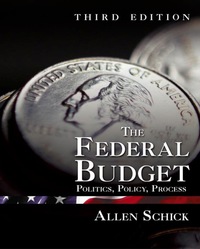Overview You work in the Accounting Policy Group of Radley International, Inc., a U.S. publicly-held manufacturer of womens handbags and other fashion accessories. In February
Overview You work in the Accounting Policy Group of Radley International, Inc., a U.S. publicly-held manufacturer of womens handbags and other fashion accessories. In February 2020, Radley acquired Carlson International, Ltd., a UK-based company that is listed on the London Stock Exchange and NASDAQ. Carlson prepares its consolidated financial statements in accordance with IFRS. You have been assigned to the acquisition team based upon your in-depth knowledge of both U.S. GAAP and IFRS. Your role is to assist your peers at Carlson to prepare Income Statements under both IFRS and US GAAP. After detailed discussions with the Controller of Carlson and their financial reporting team, you identify the key differences between IFRS and U.S. GAAP for 2019. Your summary is below: IAS 2: Inventories The ending inventory at December 31, 2019 was $125,000, which represents historical cost using FIFO. Further analysis indicates the following: (1) replacement cost of $90,000, (2) net realizable value of $95,000, and (3) normal profit margin is 20 percent of NRV. For U.S. GAAP purposes, Carlson uses the Lower of Cost or NRV method (LCNRV) to measure inventory. (As noted in the text, the inventory items are related to similar product lines and, accordingly, Carlson can perform these tests at the Group level rather than an item-by-item basis). IAS 16: PP&E Carlson uses the straight-line method to depreciate its property, plant & equipment. Carlson has four PP&E categories: (1) land, (2) buildings, (3) machinery & equipment, and (4) furniture & fixtures. A building was purchased on January 3, 2018 for $3,250,000. It has an estimated useful life of 25 years and an estimated residual value of $250,000. The company elected the revaluation model under IAS 16 to determine the carrying value of its buildings subsequent to acquisition. In January 2019, the building was appraised, and was determined to have a fair value of $3,850,000. There was no change in the estimated useful life or residual value of the building. Carlson determined that a new appraisal was not warranted at December 31, 2019. Carlson uses the historical cost method for all other categories of PP&E. IAS 36: Impairment The Carlson brand is well known in the UK. In 2011, the company acquired a trademark at a cost of $75,000. Carlson has classified the trademark as an intangible asset with an indefinite life. Using outside consultants, the trademark is determined to have a selling price (net of costs to sell) of $65,000 at December 31, 2019. Expected future cash flows from continued use of the trademark are $68,000 and the present value of the expected future cash flows is $60,000. (The fair value of the trademark is also estimated to be $60,000 based on a consultants report). Carlson is required to perform an annual impairment test on this trademark. IAS 38: Development Costs During 2019, Carlson incurred research and development costs on a new product of $250,000, of which 60% were related to development activities that occurred subsequent to reaching the technical feasibility of the project. As of the end of the 2019, the development phase of the new product had not yet been completed. IAS 23: Borrowing Costs On January 1, 2019, Carlson borrowed $3,000,000 at an interest rate of 5 percent to finance the construction of a new office building expected to cost $3,000,000. Carlson temporarily invested the proceeds until the cash was needed. Interest earned during 2019 was $6,000. During 2019, expenditures of $2,000,000 were incurred and the weighted-average expenditures were $1,500,000. The project will be completed and the loan will be paid in late 2020. An exchange gain of $5,000 was also recognized on the borrowing as a result of the differences in exchange rates in the United States and Great Britain. (Use US dollars as presented; no foreign exchange calculations are required). Also note that interest expense, related interest income and exchange gain/loss have already been recorded in the income statement. IFRS 2: Stock Options Stock options were granted to key employees on January 1, 2018. The fair value per option was $10 on the grant date, and a total of 18,000 options were granted. The options vest in equal installments (i.e., graded vesting) over three years: one-third at the end of 2018, one-third at the end of 2019, and one-third at the end of 2020. For U.S. GAAP purposes, the Controller has asked you to use the straight-line method to recognize compensation expense related to the stock options. Required Using the information provided, prepare Carlsons Income Statements for 2019 (in Word or Excel) under IFRS and US GAAP. You are to assume that Carlsons Net Income for IFRS and US GAAP purposes is $8,000,000 before consideration of these items. For each adjustment, you must include a footnote that explains the adjustment and shows the related calculations. Ignore income taxes. All numbers are in U.S. dollars.
Step by Step Solution
There are 3 Steps involved in it
Step: 1

See step-by-step solutions with expert insights and AI powered tools for academic success
Step: 2

Step: 3

Ace Your Homework with AI
Get the answers you need in no time with our AI-driven, step-by-step assistance
Get Started


